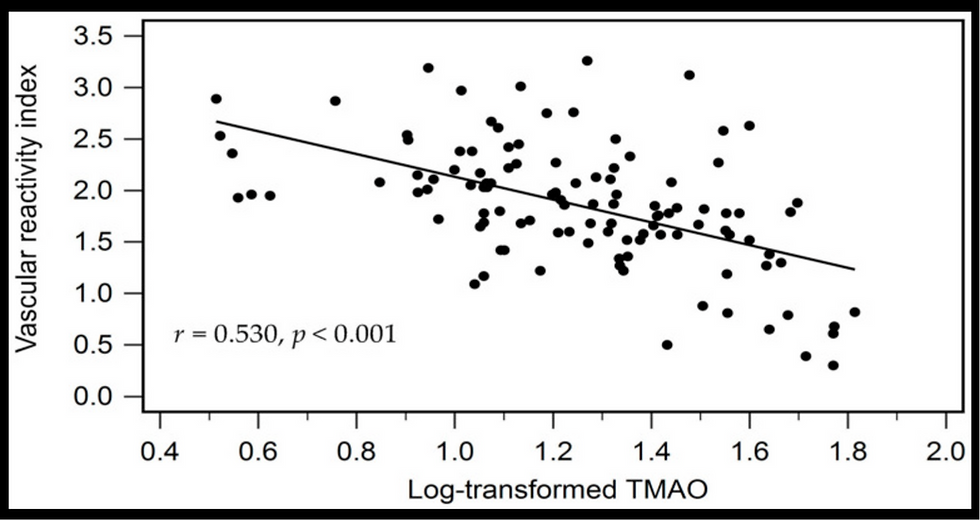Endothelial Function Monitoring in COPD and AAA
- heartlung
- Jan 16, 2023
- 3 min read
Expert Rev Respir Med. 2017 Oct 5. doi: 10.1080/17476348.2017.1389277. [Epub ahead of print] Endothelial function in patients with chronic obstructive pulmonary disease: a systematic review of studies using flow mediated dilatation. Vaes AW1,2, Spruit MA1,3,4, Theunis J2, Goswami N5, Vanfleteren LE1,4, Franssen FME1,4, Wouters EFM1,4, De Boever P2,6. Author information 1a Department of Research and Education , Ciro , Horn , Netherlands.2b Environmental Risk and Health Unit , Flemish Institute for Technological Research (VITO) , Mol , Belgium.3c Department of Respiratory Medicine , Maastricht University Medical Centre (MUMC+), NUTRIM School of Nutrition and Translational Research in Metabolism , Maastricht , The Netherlands .4d REVAL – Rehabilitation Research Center, BIOMED – Biomedical Research Institute, Faculty of Medicine and Life Sciences , Hasselt University , Diepenbeek , Belgium .5e Department of Physiology , Medical University of Graz , Graz , Austria.6f Centre for Environmental Sciences , Hasselt University , Hasselt , Belgium . Abstract BACKGROUND: Cardiovascular disease is an important cause of morbidity and mortality in chronic obstructive pulmonary disease (COPD). Endothelial function may be involved in the pathogenesis of cardiovascular disease. In contrast to the attention given to pulmonary endothelial dysfunction, little is known about peripheral vascular changes in COPD. Therefore, we reviewed the literature on peripheral endothelial function in COPD. METHODS: Databases were screened for studies using ultrasound-based flow-mediated dilation (FMD), the reference method for assessing peripheral endothelial function, in stable COPD patients. Pooled effect sizes were calculated using random effects model. RESULTS: 17 studies were identified, with a total of 1228 participants (724 COPD patients; 504 controls). Pooled analysis demonstrated an impaired endothelial-dependent FMD (-3.22%; 95% confidence interval (CI) -4.74 to -1.69; p<0.001; I2=96%) and endothelial-independent FMD (-2.86%; 95%CI -5.63 to -0.09; p=0.04; I2=83%) in COPD patients when compared with smoking and non-smoking controls. CONCLUSION: This review provides evidence for impaired peripheral endothelial function in COPD. Since impaired endothelial function may contribute to cardiovascular morbidity, a more comprehensive cardiovascular phenotyping is considered important in COPD to address cardiovascular risk. A high frequency of cardiovascular comorbidity is observed in COPD patients, and therefore well-controlled, larger studies that investigate endothelial function in COPD patients are recommended. Am J Physiol Heart Circ Physiol. 2017 Sep 22:ajpheart.00344.2017. doi: 10.1152/ajpheart.00344.2017. [Epub ahead of print] Effects of acute exercise on endothelial function in abdominal aortic aneurysm patients. Bailey TG1, Perissiou M1, Windsor M1, Schulze K2, Nam M3, Magee R3, Leicht AS4, Green DJ5, Greaves K3, Golledge J4, Askew CD6. Author information 1University of the Sunshine Coast.2Sunshine Vascular Private Practise.3Sunshine Coast Hospital and Health Service.4James Cook University.5The University of Western Australia.6University of the Sunshine Coast caskew@usc.edu.au. Abstract Endothelial dysfunction is observed in patients with abdominal aortic aneurysm (AAA), who have increased risk of cardiovascular events and mortality. This study aimed to assess the acute effects of moderate and higher-intensity exercise on endothelial function, as assessed by flow-mediated-dilation (FMD), in AAA patients (n=22; 74±6 y) and healthy adults (n=22; 72±5y). Participants undertook three randomised visits, including moderate-intensity continuous exercise (40% peak power output, PPO), higher-intensity interval exercise (70% PPO), and a no-exercise control. Brachial artery FMD was assessed at baseline, 10- and 60-min after each condition. Baseline FMD was lower in AAA patients compared to healthy adults [by 1.10%, (95% CI, 0.72 to 1.81), P=0.044]. There were no group differences in the FMD responses after each condition (P=0.397). FMD did not change after the control condition, but increased by 1.21% (95% CI, 0.69 to 1.73, P<0.001) 10 min after moderate-intensity continuous exercise in both groups, and returned to baseline levels after 60-min. Conversely, FMD decreased by 0.93% (95% CI, 0.41 to 1.44, P<0.001) 10-min after higher-intensity interval exercise in both groups, and remained decreased after 60 min. This study found that the acute response of endothelial function to exercise is intensity-dependent and similar between AAA patients and healthy adults.This provides evidence that regular exercise may improve vascular function in AAA, as it does in healthy adults. Improved FMD following moderate-intensity exercise may provide short-term benefit. Whether the decrease in FMD following higher-intensity exercise represents additional risk and/or a greater stimulus for vascular adaptation remains to be elucidated. Copyright © 2017, American Journal of Physiology-Heart and Circulatory Physiology. Endothelial Function Scientific Update Sponsored by Endothelix Inc.
![Lipoprotein(a) levels predict endothelial dysfunction in maintenance hemodialysis patients: evidence from [VENDYS] vascular reactivity index assessment](https://static.wixstatic.com/media/dac531_5285607cc591409a9d83746f042af7c6~mv2.png/v1/fill/w_980,h_980,al_c,q_90,usm_0.66_1.00_0.01,enc_avif,quality_auto/dac531_5285607cc591409a9d83746f042af7c6~mv2.png)


Comments